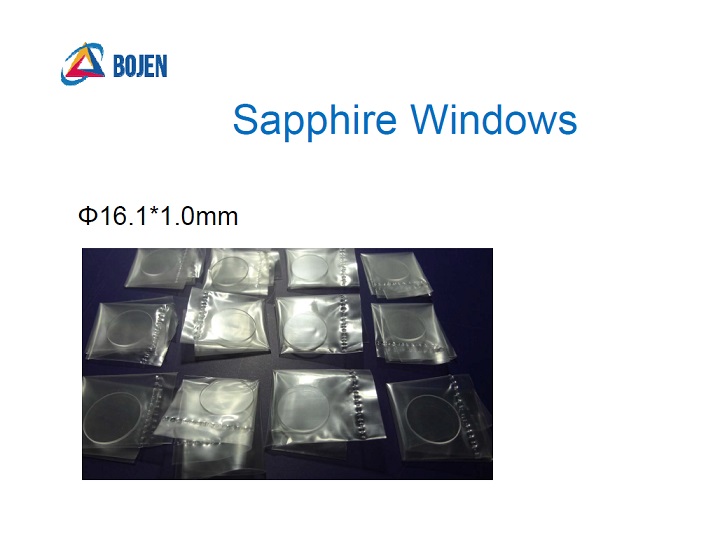Sapphire Glass Windows
|
S/D
|
80/50~40/20
|
|
Flatness
|
2λ~λ/4
|
|
Parallelism
|
<3 arc min
|
Synthetic sapphire, or sapphire glass, is highly transparent to wavelengths of light between 150 nm(UV) and 5500 nm(IR) and extraordinarily scratch-resistant.
The key benefits of sapphire windows are:
· Very wide optical transmission band from UV to near-infrared (0.15–5.5 µm)
· Significantly stronger than other optical materials or standard glass windows
· Highly resistant to scratching and abrasion (9 on the Mohs Scale of mineral hardness scale), the 3rd hardest natural substance next to moissanite and diamonds.
· Extremely high melting temperature (2030 °C)
Some sapphire-glass windows are made from pure sapphire boules that have been grown in a specific crystal orientation, typically along the optical axis, the c-axis, for minimum birefringence for the application. The boules are sliced up into the desired window thickness and finally polished to the desired surface finish. Sapphire optical windows can be polished to a wide range of surface finishes due to its crystal structure and its hardness. The surface finishes of optical windows are normally called out by the scratch-dig specifications in accordance with the globally adopted MIL-O-13830 specification..
The sapphire windows are used in both high pressure and vacuum chambers for spectroscopy, crystals in various watches, and windows in grocery store barcode scanners, since the material's exceptional hardness and toughness makes it very resistant to scratching.
It is used for end windows on some high-powered laser tubes as its wide-band transparency and thermal conductivity allow it to handle very high power densities in the infra-red or UV spectrum without degrading due to heating.


